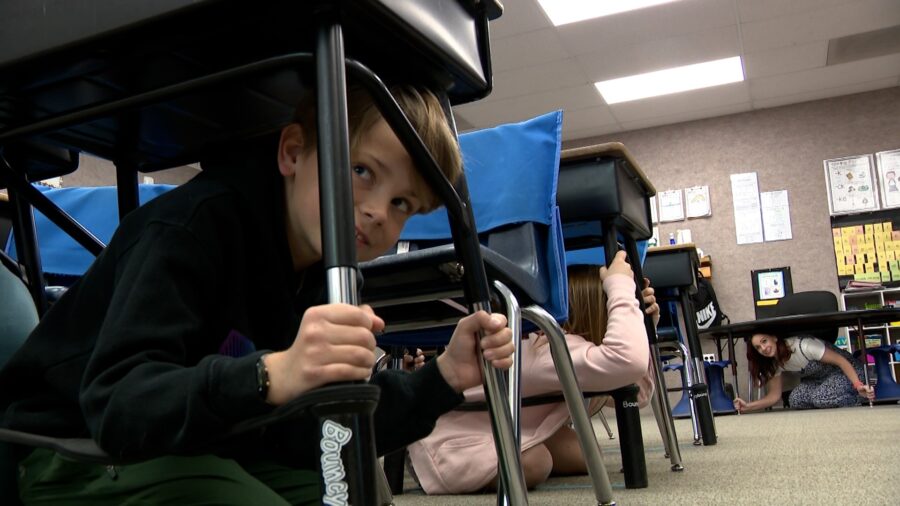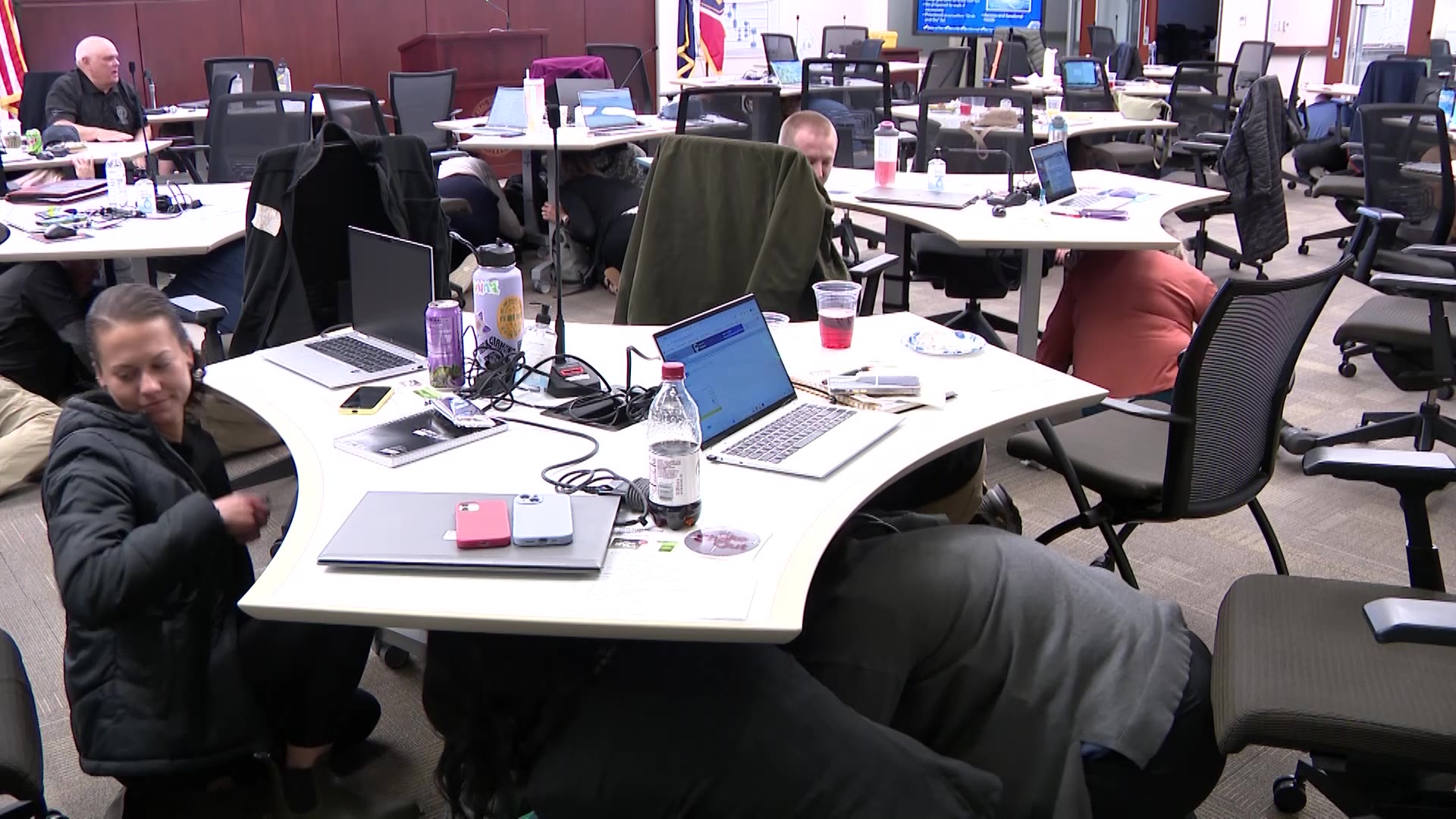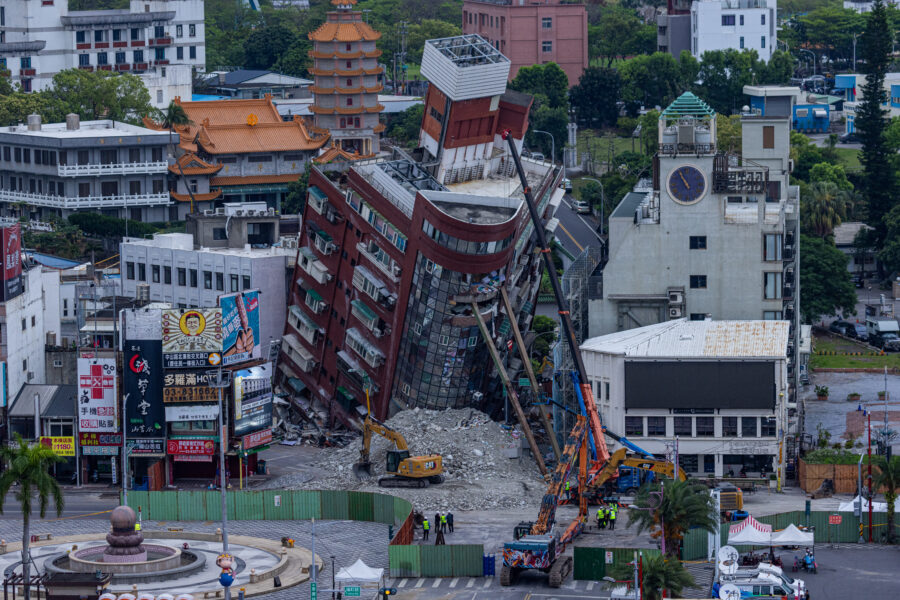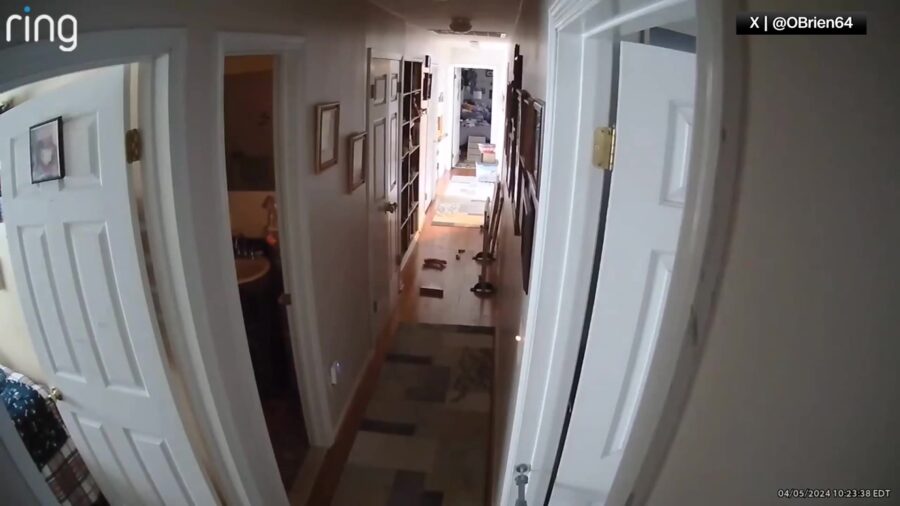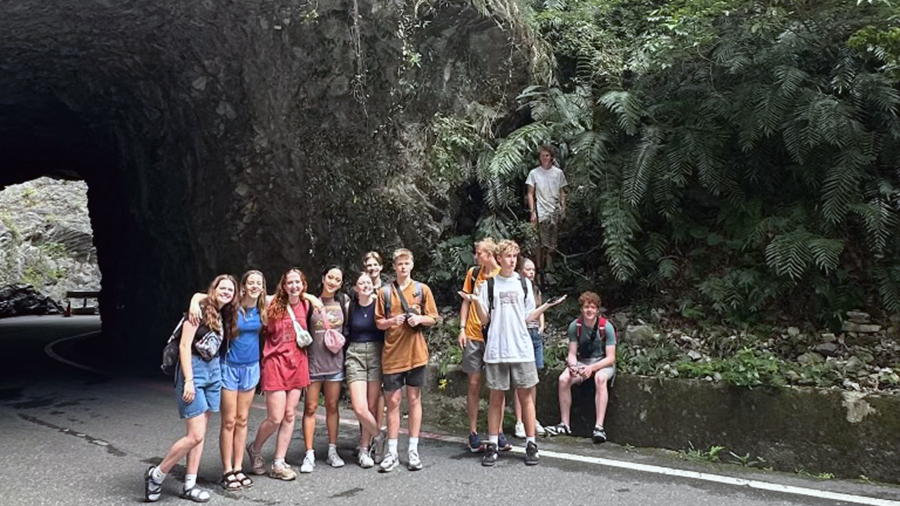3 years after Magna earthquake, here’s how Utah’s preparing for an even bigger one
Mar 18, 2023, 12:35 PM | Updated: 1:52 pm

A 5.7-magnitude earthquake with an epicenter near Magna rocked the Wasatch Front on March 18, 2020. (KSL TV)
(KSL TV)
LOGAN, Utah — Brady Cox’s career in civil engineering and earthquake engineering has taken him all over the world in the past 20 years. He’s traveled from Utah to places like New Zealand, Turkey, Peru, Japan, and Haiti studying earthquake damage and doing earthquake reconnaissance.
“(I) Always kind of had that thought that I would like to return to Utah and try and do more for the citizens of Utah — for my home state — to encourage better earthquake preparedness in terms of engineering design and construction,” said Cox.
Two and a half years ago, Cox returned to his home state, where he now works as a professor of civil engineering at Utah State University and serves as a leading earthquake expert.
Immediately after his return, Cox started encouraging Utah, the most seismically hazardous state without an earthquake engineering research center, to form one.
“My goal was to get this center started so that we could bring focus to our engineering efforts to prepare our infrastructure for a large and damaging earthquake,” Cox said.
Now, nearly three years after a 5.7 magnitude earthquake centered in Magna that was felt widely across the Wasatch Front, Cox talked with KSL.com about the issue of earthquakes in Utah, as well as the upcoming launch of the Utah Earthquake Engineering Center.
Utah’s earthquake vulnerability
Cox was set to return to Utah when the Magna earthquake hit, something he said solidified his decision to push for the center.
“Even though it was relatively small in terms of engineering consequences, it still caused about $600 million worth of damage and really revealed some weaknesses that we need to address before we have a big earthquake,” Cox said.
The brunt of the damage was taken on by the over 150,000 unreinforced masonry buildings that sit in Utah — a total five-and-a-half times higher than that of California.
To further compound the issues, Cox said that these buildings are the predominant cause of death in “most” earthquakes.
“We have a huge problem with unreinforced masonry structures in the state,” Cox said.
While these structures are the weakest link, there are other factors that make Utah even more vulnerable to sustaining substantial earthquake damage. Cox said that Utah has a lot of ground that is considered liquefiable, which could pose a significant problem.
“(This) means that it’s susceptible to a problem that we call soil liquefaction in an earthquake. Soil liquefaction causes all kinds of damage where buildings, you know, will punch into the ground or tip over; buried pipelines will float to the surface — so, your water lines and your sewer lines,” Cox said.
Though the Magna earthquake wasn’t big enough to trigger any liquefaction, Cox saw the destruction it can cause while in Christchurch, New Zealand, in 2010 and 2011.
“It caused billions of dollars of damage to their city,” Cox said. “The liquefaction was so bad that they had to force residents in about 7,500 homes to vacate their properties and move away, and they decided they weren’t going to rebuild on that ground anymore.”
‘Overdue’ for a bigger earthquake
As an earthquake engineer, Cox collaborates closely with seismologists including those at the University of Utah Seismograph Stations.
While earthquake engineers focus on designing infrastructure that can withstand earthquakes, seismologists figure out what size of earthquakes to expect and how often they’re expected to occur.
“They basically have went through and said, ‘Hey, we can tell that earthquakes occur along the Wasatch fault, somewhere — there are five major segments between Nephi and Brigham City,” Cox said. “They think that the last rupture along the Wasatch Fault, the Salt Lake City segment, occurred about 1,100 or 1,200 years ago. So, by our account, we’re a couple hundred years overdue for a large earthquake in Salt Lake City.”
However, the Salt Lake City segment isn’t even the most overdue segment of the fault. That distinction goes to the Brigham City segment, which Cox said is between 2,000 to 2,500 years overdue for a large earthquake.
“All of those segments of the fault that run between Nephi and Brigham City, they can produce earthquakes up to magnitude 7 or a little over magnitude 7,” Cox said.
Seismologists make predictions of earthquakes through a process that involves digging across the fault, viewing fault rupture offsets and carbon dating those offsets.
The consequences an earthquake of the magnitude that both seismologists and earthquake engineers agree is overdue could have would be staggering and deadly along the Wasatch Front.
In 2015, the Utah Chapter of the Earthquake Engineering Research Institute estimated that the “big one” along the Salt Lake City segment of the fault would result in approximately:
- 2,500 deaths
- 8,000 injuries
- 84,000 displaced households
- 330,000 households without potable water for over 90 days
- $33 billion in economic losses
Cox acknowledged that while the data is slightly dated, the estimates are on the smaller end of the spectrum due to the rapid growth the Beehive State has seen since 2015.
“Eighty percent of Utah’s population lives within 15 miles of a fault, and a lot of that population is spread right up and down the I-15 corridor, from between Utah County and Brigham City,” Cox said.
What is being done?
Despite Utah’s vulnerability to a large, looming earthquake, there is work being done — largely thanks to Cox’s determination and urgency to start an earthquake engineering center. The goal is to get ahead of the curve and mitigate disaster when the next earthquake hits.
Following the end of the 2023 legislative session, USU was awarded $2.5 million in one-time funding to launch the Utah Earthquake Engineering Center in hopes of promoting resiliency and preparing for a more rapid recovery across the state following a major earthquake.
“Anything new that’s built in the state … we want to make sure that it’s designed and constructed to the highest standards so that our new construction is going to not just withstand an earthquake, but it’s going to allow us to minimize recovery time,” Cox said. “We don’t want to just survive an earthquake; we want to be able to quickly return back to life as normal.”
The debilitating effects of an earthquake are something that Cox has seen many times throughout the world.
“Earthquakes will absolutely devastate your city for years, and we want to avoid that happening,” he said. “We’re going to focus on making sure that our national design codes are as good as they possibly could be when applied to Utah-specific geologic conditions and Utah-specific problems.”
Along with new construction, the center will also be focused on retrofitting old construction and existing buildings — particularly unreinforced masonry structures — to increase their durability and resiliency in the event of an earthquake.
“We will need to retrofit those existing buildings and schools and other structures, like aqueducts and sewer lines, that were not built to modern standards,” Cox said. “The new Utah Earthquake Engineering Center will help bring focus to these efforts.”
A major component of the center’s applied research program will be its custom-designed, large-scale shaker tables used for simulating earthquake loads and test building and infrastructure components. The funding will also be used to acquire specialized fiber optic systems for measuring seismic responses in bridges, pipelines and other infrastructure, according to a news release from USU.
The center will officially launch this fall with ongoing support from USU and the one-time, $2.5 million appropriation from the state.
“We’re excited to have the opportunity to work with everybody across the state to improve seismic resilience and we’re very grateful to the Utah Legislature for funding this important effort,” Cox said. “I just want to let people know that we’re going to do the best that we can to help the citizens of Utah prepare for a big earthquake.”
And, as it happens, Cox is the perfect person to be leading the charge toward a more earthquake-resilient Utah.
“I started my earthquake engineering career in Turkey. When they had a big earthquake in 1999. … I went to Turkey at that time and I studied that earthquake and now, over 20 years later, they’ve had these two massive earthquakes that have killed about 50,000 people,” Cox said. “In Turkey, they didn’t learn the lesson from that earthquake that happened 20-some years ago, and now they’ve had an even more devastating event.”
This, in many ways, fuels his pursuits now.
“I hope that we can prevent that from happening in Utah. That’s my main goal. I don’t want to see that happen,” Cox said. “It’s so easy to ignore because we don’t have earthquakes very often and we forget about them. But we have to stay diligent because when that big earthquake does happen, we’re going to regret that we didn’t do more to prepare.”


